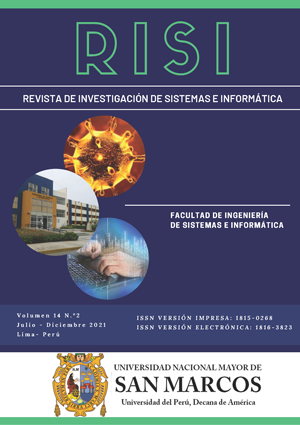A mobile application with machine learning techniques based on data from inertial sensors for the monitoring and identification of occurrences of Parkinson's tremor
DOI:
https://doi.org/10.15381/risi.v14i2.23151Keywords:
Mobile application, Parkinson's tremor, Preventive technology, Signal processing, Internet of ThingsAbstract
This article aims to show the results of the development of a mobile app that controls the monitoring and detection of occurrences of Parkinson's tremor. One of the specific objectives is the development of a hybrid application that uses machine learning techniques (Machine Learning) and data from inertial sensors present in smartphones. This app could enable the medical specialist to diagnose the degree of parkinsonian tremor (a product of Parkinson's disease), likewise the system allows keeping track of the results. On the one hand, the patient will have a report sent by email, it will also allow control of the movement freezing time, and an alarm system for the dosage of medications prescribed in the treatment. The implementation of the app is based on the Ionic framework and uses linear regression techniques for early identification from inertial sensor data. Among the results, we can observe the completion and viability in the development of the application, the initial considerations for its operation, taking into account variables, specifications, models, architecture and use cases that allow optimal operation and coupling with the other two analysis functionalities that are freezing (measuring the time of the person without movement) and alarm (medication dosage control).
Downloads
Downloads
Published
Issue
Section
License
Copyright (c) 2022 Carlos Raúl André Godinez Tello, Luzmila Elisa Pró Concepción

This work is licensed under a Creative Commons Attribution 4.0 International License.
AUTHORS RETAIN THEIR RIGHTS:
a. Authors retain their trade mark rights and patent, and also on any process or procedure described in the article.
b. Authors retain their right to share, copy, distribute, perform and publicly communicate their article (eg, to place their article in an institutional repository or publish it in a book), with an acknowledgment of its initial publication in the Revista de investigación de Sistemas e Informática.
c. Authors retain theirs right to make a subsequent publication of their work, to use the article or any part thereof (eg a compilation of his papers, lecture notes, thesis, or a book), always indicating its initial publication in the Revista de investigación de Sistemas e Informática (the originator of the work, journal, volume, number and date).


